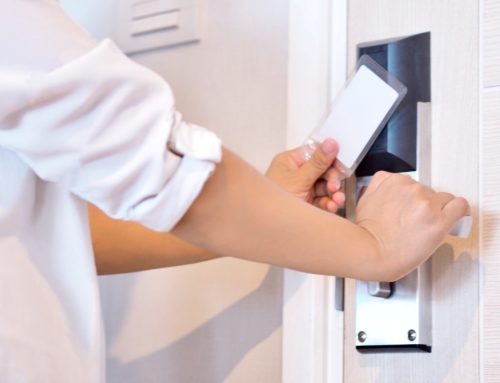Native American casinos offer a wide array of gaming opportunities that help patrons satisfy their gambling itch. But casinos, whether they be in Las Vegas or on the myriad Native American reservations around the country, are big business. Native American casinos in the U.S. totaled more than 524 as of 2019 and are the fastest growing segment of the gaming industry. While Native American gaming resorts may not be as expansive and opulent as their Vegas counterparts, the casinos themselves can be massive and rake in huge dollars. According to Gaming Business, gross gambling revenue from Native American casinos increased 2.5% year-on-year in the 2019 financial year to a record $34.6 billion. The total was the highest single-year figure in the 32 years since the federal Indian Gaming Regulatory Act was enacted.
While Native American casinos may differ in business operations and gaming policy, there is one common trait. When it comes to security, no casino is willing to gamble house money. And in an environment where the casino’s front doors are typically open 24/7, the security stakes are even higher.
Security requirements at Native American casinos and resorts are unique in two key areas. Las Vegas casinos hire private security that is tasked with observing and reporting to local law enforcement. Because they are on Federal land, Native American casinos have their own police force, which potentially give security in Native American casinos far more leeway because they are the law. Perhaps the most important point is that the bulk of revenues generated in casinos and resorts are funneled back into the Native American community to improve infrastructure and schools. This makes security a major issue and increases the need for reliable technology.
The crucial interdependence of casino operations and the Native American community welfare has increased the migration to security technology solutions to mitigate risk. While video surveillance is perfect for forensics and monitoring crowds in the gaming areas and around the perimeter of the property, protecting people and assets is the job of door control in the vulnerable business operations areas.
Door interlocks, otherwise known as mantraps, are becoming integral tools for Native American facilities. More advanced and integrated solutions are supplementing the use of a simple, one-room door interlocks in the money areas, becoming more complex as they connect other back-of-house business operations. Solutions that now incorporate multiple-door interlocks, automatic door operators, door annunciators and door-prop alarms, and high-intensity LEDs that can provide immediate door status to security personnel, are quickly replacing cumbersome and less than secure key systems.
Perhaps the bigger issue is that access to these back-office areas often require access by many people, on different shifts, 24 hours a day. Access can be controlled by keys, which have been used by casinos for years. But a single set of keys may be used by over a dozen people in a week. Keys are often signed in and out through an electronic key box. Solid policies need to be in place and followed in the event that a set of keys goes missing. Policies are often very good, but also often not followed for convenience reasons, which is why most casinos have chosen to move past keys to secured door and electronic access control solutions.
Don’t Gamble with Door Security
It is important to understand security protocols and traffic flow to secured areas if interlocking doors are implemented and are integrated into the casino’s access control system. A detailed checklist developed by Dortronics Systems can help with the door interlock project. After defining the primary purposes of mantrap, it is critical to determine the traffic pattern and the door relationships when designing a door interlock system. A door matrix chart can display the floor plan where each door is numbered, and each room labeled to illustrate the required logic. Shared doors between rooms and other doors in these rooms must all be controlled by a common interlock controller. But installation of the common two-door interlock must consider that door switch contacts are usually not hardy enough to switch lock power and can result in an early door switch failure. This could hamper access throughput. Mantraps are an excellent door control solution for high-risk locations such as a cash count-room, but they can lose their effectiveness if the number of people who have access is large. It important that these mantraps are armed with door status switches to monitor traffic and door status.
Maglocks and electric strikes are two more key door hardware devices frequently used in a casino. A combination of both fail-safe maglocks and fail-secure strikes are most often used in the money counting areas. In the case of a power failure where maglocks de-activate, the doors will remain secured by the strikes and mechanical locksets.
Dortronics Casino Solutions
Dortronics offers two options for casinos looking to incorporate user programmable PLC interlock solutions. The 48500 PLC interlock controller is a cost-effective method for operating door interlock and mantrap systems of up to five doors. The fully integrated controller is a one board solution that allows the installer complete control of all operating and configuration options without complex software. Also, any access control system can be used with the 48500 series controllers. The 48900 PLC interlock controller is also a field-configured nine-door interlock device, that is suitable for air locks or security mantraps with two to nine doors that are locked or unlocked. This controller has outputs for traffic lights, door violation alarm and provides three individual timing sequences for propped door time, emergency override unlock time and a REX unlock time.
For gate or swing door applications, the Dortronics 1000 family of industrial strength magnetic locks can be used in harsh environments to secure doors and gates. All Dortronics electromagnetic locks are failsafe, releasing instantly upon command or loss of power. As with any door control system, it is only as effective as its monitoring capabilities. Dortronics alarm annunciators are a crucial element of door security, offering notifications of an active breach. Dortronics makes door annunciators and door prop alarms that include complete alarm systems. These features include delayed egress with built-in keypad access control, audible and visual alarms and anti-tailgate relocking. The complete secured door package should include high-intensity LEDs with the annunciators so alerts can be seen by security personnel in various lighting conditions and bright sunlight. The Dortronics 7200-HWR LED series are weather-proof units that can be used for perimeter access control gates exposed to the weather. If mounted near card readers, the LEDs can be used to clearly indicate when individual doors and/or gates can be accessed.
For emergency operations, casinos can opt for the Dortronics 6510 series of emergency pull stations. Casinos may integrate the pull stations for emergency exit door release with badge in/out access control systems, or door interlock and mantrap-type systems. A variety of colors and text enhance the messaging making these units suitable for signaling an alarm panel in the event of an emergency situation.
Another key door security element being integrated into casino environments over the past 16 months has been touchless access control systems. The specter of the COVID-19 pandemic forced casino operators to rethink access control, looking for options to decrease the spread of contagions. The Dortronics 5278 series of touchless switches are a cost-efficient option for high security that is also safe for staff and customers. The 5278 Series utilizes optical infrared technology. The imbedded sensor picks up motion within a four-inch range of the face plate. A hand wave activates the switch; however, if inadvertently touched the sensor will pick up the motion before actual contact, resulting in normal operation.
Casinos are still in the midst of a crisis as security directors work with owners to assess a recovery path from this pandemic. New health and safety policies and procedures, along with advanced security technology have a mapped a new risk picture. However, door control technology and policy remain the foundation of any solid security program at Native American gaming facilities and resorts.





